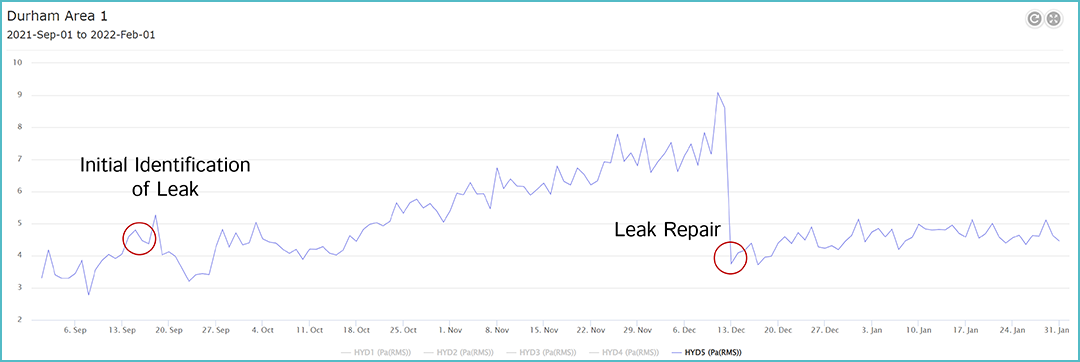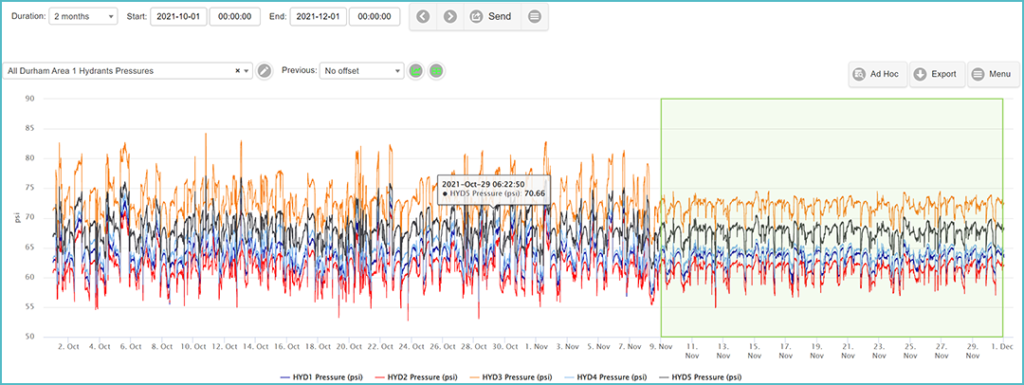Finding Leaks
The Regional Municipality of Durham covers a large geographic area to the east of the City of Toronto. The Region covers an area of 2,523km2 (974mi2) which includes several large cities and towns with a rapidly growing population of over 700,000 people. The Region obtains water from Lake Ontario, Lake Simcoe, and groundwater systems. The water distribution systems include:
- 23 water storage facilities
- 21 pumping stations
- 2,600km (1,615mi) of watermains
As part of the Region’s commitment to reducing water loss and gaining greater understanding into the operation of the water distribution system, the Region embarked on a pilot program to evaluate smart water technologies in 2021. As part of this program, the hydrant.AI solution was implemented to assist the Region in detecting leaks, monitoring pressure, and detecting transient events.

Installed in June 2021, the 5-unit proof of concept deployment identified a leak within the distribution system on September 16, 2021. Over time the confidence level increased that a leak was present and the hydrant.AI Platform identified the leak as a high confidence event along with its general location. As part of the pilot project, the leak was allowed to continue while monitoring the leak noise and its change over time. On December 12, 2021, the Region repaired the leak once it had finally surfaced.

Better Understanding Transients
In addition to the detection of the leak, the Region has also identified several transient events in the system tied to the routine operation of pumps and valves, as well as power failures. Having a greater understanding of the magnitude of these events and the effects they have on the distribution piping is helping the Region to consider operational changes and mitigation strategies to limit transients within the network.
The figure below shows a new 1,050mm (42”) feedermain being brought online. This graph was used to facilitate a discussion with Operations staff on the impact of system pressure fluctuations over time.

Two other insights that were found in the data included transient events related to a power failure at a pump station that draws water from the pressure zone, as well as the pressure events related to the routine closure of a reservoir valve, used to initiate a discussion on the refinement of valve operations.

As part of this project, the Region has also integrated their SCADA data into the hydrant. AI platform and are now able to directly see the impact of operations on the pressures and transients in their network. This has enabled the Region to identify transients through alerts and trace their causes all in one place, reducing effort while allowing for more in-depth and timely investigations.
Moving forward, the intent is to continue to identify and locate leaks, monitor and assess the impacts of transients on the water system to effect operational improvements, and be able to use both the SCADA data and the hydrant.AI Device data to provide further insights related to anomalous system events.

